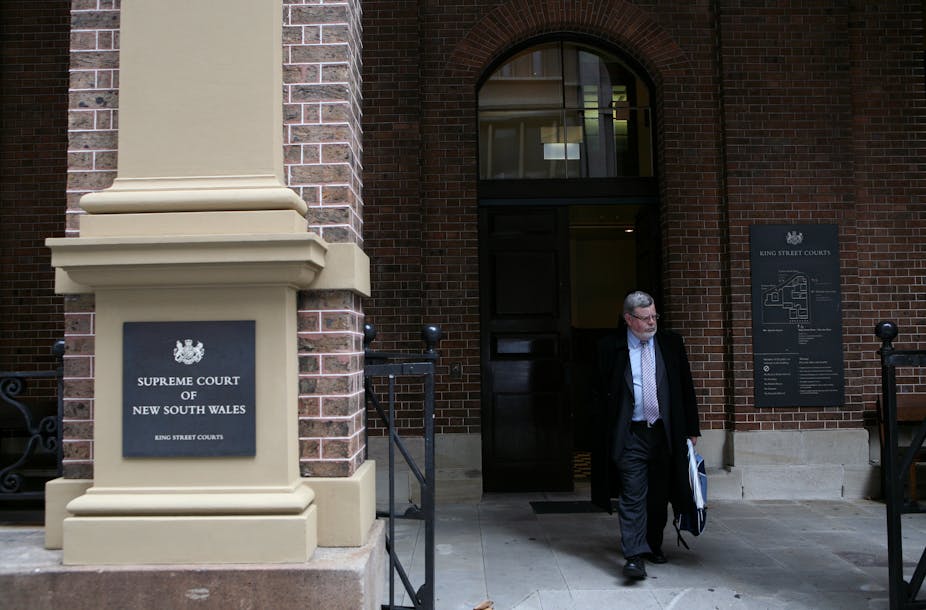Yesterday, the NSW parliamentary Select Committee on the Partial Defence of Provocation released its final report. The report contains a set of recommendations for reforming a defence that has long attracted criticism.
The committee’s final report shies away from closing the door on provocation completely. It recommends a model of reform that retains but restricts this controversial partial defence.
The report is the result of an inquiry that was formed last June in response to community outrage surrounding the trial and sentencing of Chamanjot Singh, who was convicted for killing his wife, Manpreet Kaur.
Singh successfully argued at trial that he was provoked to kill his wife because of suspicions of infidelity, disparaging comments made about his mother by his wife and her sister’s husband, a belief the relationship was ending and that consequently he would be deported. He was convicted of manslaughter and sentenced to a minimum of six years imprisonment.
Over the course of the inquiry, the committee took submissions from 52 stakeholders, heard evidence given by 34 witnesses and received a further 32 supplementary submissions in response to an Options Paper. The resulting detailed and often conflicting views have been compiled into the comprehensive final report.
However, reforming the law of provocation in NSW was never going to be an easy task. It requires a delicate balance to be struck between protecting the interests of abused women who in exceptional cases rely on provocation where they are unable to raise a complete defence of self-defence whilst also protecting the law against jealous and controlling men who for decades have abused provocation as an avenue away from murder where they have killed in response to sexual infidelity or relationship separation.
The proposed “partial defence of gross provocation” recommended by the committee requires a defendant to have acted in response to “gross provocation” which caused them to have a “justifiable sense of being seriously wronged”. Within this, the focus of the restricted defence is on the nature of the provocative conduct as opposed to the defendant’s loss of self-control - an aspect of the defence that has been heavily critiqued in past reviews.
Perhaps most importantly, the new restricted defence expressly excludes the partial defence being raised in circumstances where the defendant incited a response to provide an excuse to respond with violence or where the defendant was responding to a non-violent sexual advance by the victim. The latter a welcomed inclusion for those who remember the injustice of the 1997 High Court decision on Malcolm Green, who had his conviction for the murder of a male friend overturned when the High Court decided that provocation should have been left to the jury. The case prompted significant debate surrounding what is known as the “gay panic” defence.
However, where the committee’s recommendations expressly exclude these scenarios from ever giving rise to a successful partial defence of “gross provocation”, their response to the profoundly troubling use of the defence in cases of male perpetrated intimate homicide falls short.
In this respect, the committee has recommended that the defence should not be available in a series of further circumstances - including cases where the provocation was based on anything done by the deceased to end the relationship or change the nature of the relationship including disclosing infidelity, taunts about sexual inadequacy or discovering a partner “in the act”. However, for these circumstances a provision has been included to disallow these scenarios except in some “extreme and exceptional circumstances”. It is these four words that largely undermine the success of an otherwise well thought out and detailed package of recommendations.
As argued by Lloyd Babb, the NSW Director of Public Prosecutions, not only does this provision add an extra “complexity” to an already complicated defence but the “gross provocation” model also “seems to retain the possibility that infidelity may in extreme and exceptional circumstances be provocation”.

University of Sydney’s Graeme Coss, an advocate for abolition of provocation, similarly warned the committee of the dangers of providing a loophole arguing that: “Every time there is an out, that out will be embraced”.
This provision will undoubtedly be open to manipulation by legal counsel and unintended interpretation by the individual judge and jury. While it is hoped that it will be implemented with the principles and lessons of the committee’s review in mind, it would be naive to think that there will not be unexpected successful defences post-reform.
In this respect, unfortunately the committee has not heeded the warnings of other jurisdictions, where partial reform to the law of provocation has led to the defence continuing to be abused in unintended ways. This is most evident in the UK, where the 2012 trial and appeal of Jon-Jacques Clinton reignited the “jealous man” provocation defence in the English courts despite attempts at reform to expressly exclude it.
But for now only time will tell. First, it remains to be seen what the approach of the NSW government - who have until October 2013 to respond to the committee’s recommendations - will be.
If the new “partial defence of gross provocation” is implemented, only time will reveal in what unexpected ways it will be abused, upon which we will again be reminded that a partial defence of provocation has no place in 21st century criminal law.

